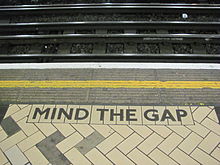I’m still reading STORY and have so much to say on its utility that you’ll just have to bear with me for a few more posts on it.
THE GAP
McKee has a theory that the material a story is made of is not words, not paper and pen (or computer) but something he calls the GAP. The Gap develops when a main character acts and discovers that his/her expectations regarding the response s/he’s going to get conflict with the reaction s/he really gets. This discrepancy forces the character to adjust and change.
Each of these Gaps moves the plot along, giving it momentum. There are ups and downs that alternate and become more dramatic over time. And the stakes must get progressively higher as the story moves along.
Minding your Gaps
In order to get a solid handle on story components, McKee recommends looking back at favorite movies (he is, after all, a screenwriter) and dissecting them according to his technique. But since I don’t go to the movies, I decided to read some of my stories again. I chose two:
- the apple of my eye, a short story I recently submitted to a competition, and
- the Lame-O story that lives in Rejection City.
My favorite story I have yet written–the story I just submitted to a writing contest–conforms beautifully to the standards McKee recommends. In each scene, a gap develops, and the central character must now change the strategies by which he’s trying to achieve the object of his desire. Scenes alternate between hope and disappointment. The stakes get higher and higher with each scene (each one bringing a new Gap) until the Climax.
And the Lame-O story is a mess. The first Gap appears on schedule in the Central Plot, but the protagonist is so passive that she doesn’t really change in response to the surprising reaction she gets. She gets smacked down several times running without a contrasting boost. The subplot is handled better, but the stakes are never really high enough.
Don’t wait: consider your Gaps before you submit!
I’m hoping at some point I’ll learn how to salvage that story, maybe based on these observations. But the next thing I did was look at the story I’m working on now. I’m feeling it’s a bit fuzzy on its Gaps–not so bad as the Lame-O story, but not as clear as my favorite story, either. At least I haven’t submitted it to the editor yet, so there’s time to clean it up!




















